Hyundai Staria vs Nissan X-Trail – Which model is better for everyday use?
Everyday use, family trips or long-distance drives – here’s where the differences show.
Discover whether Hyundai Staria or Nissan X-Trail fits your lifestyle better.
Costs and Efficiency:
Price and efficiency are key factors when choosing a car – and this is often where the real differences emerge.
Nissan X-Trail has a noticeable advantage in terms of price – it starts at 34000 £, while the Hyundai Staria costs 42400 £. That’s a price difference of around 8400 £.
Fuel consumption also shows a difference: Nissan X-Trail manages with 5.70 L and is therefore noticeable more efficient than the Hyundai Staria with 7.60 L. The difference is about 1.90 L per 100 km.
Engine and Performance:
Power, torque and acceleration are the classic benchmarks for car enthusiasts – and here, some clear differences start to show.
When it comes to engine power, the Hyundai Staria has a barely noticeable edge – offering 225 HP compared to 213 HP. That’s roughly 12 HP more horsepower.
In acceleration from 0 to 100 km/h, the Nissan X-Trail is significantly quicker – completing the sprint in 7 s, while the Hyundai Staria takes 10.20 s. That’s about 3.20 s faster.
In terms of top speed, the Nissan X-Trail performs slightly better – reaching 200 km/h, while the Hyundai Staria tops out at 167 km/h. The difference is around 33 km/h.
There’s also a difference in torque: Nissan X-Trail pulls clearly perceptible stronger with 525 Nm compared to 367 Nm. That’s about 158 Nm difference.
Space and Everyday Use:
Beyond pure performance, interior space and usability matter most in daily life. This is where you see which car is more practical and versatile.
Seats: Hyundai Staria offers clearly perceptible more seating capacity – 9 vs 7.
In curb weight, Nissan X-Trail is clearly perceptible lighter – 1668 kg compared to 2275 kg. The difference is around 607 kg.
In terms of boot space, the Hyundai Staria offers noticeable more room – 831 L compared to 585 L. That’s a difference of about 246 L.
In maximum load capacity, the Nissan X-Trail performs hardly perceptible better – up to 1424 L, which is about 121 L more than the Hyundai Staria.
When it comes to payload, Hyundai Staria evident takes the win – 775 kg compared to 574 kg. That’s a difference of about 201 kg.
Who wins the race?
The Nissan X-Trail proves to be is largely superior and therefore becomes our DriveDuel Champion!
Nissan X-Trail is the better all-rounder in this comparison.
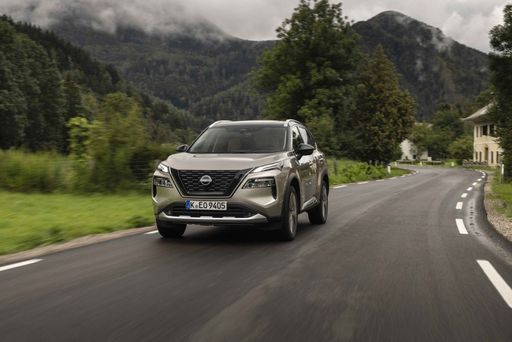 @ germany.nissannews.com
@ germany.nissannews.com
Nissan X-Trail
Hyundai Staria
The Hyundai Staria stands out with its futuristic design, characterised by sleek lines and an expansive front grille that makes a bold statement on the road. Inside, it offers a spacious and versatile interior, providing a comfortable ride for both driver and passengers. This vehicle effortlessly combines practicality with a touch of luxury, appealing to families and professionals alike.
details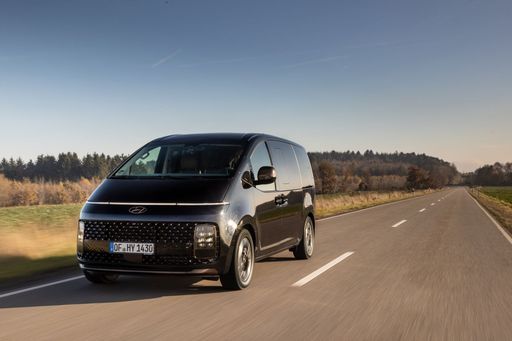 @ hyundai.news
@ hyundai.news
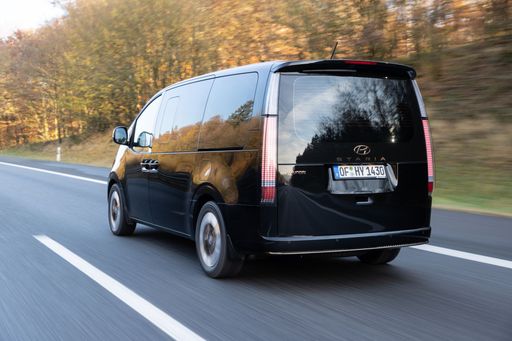 @ hyundai.news
@ hyundai.news
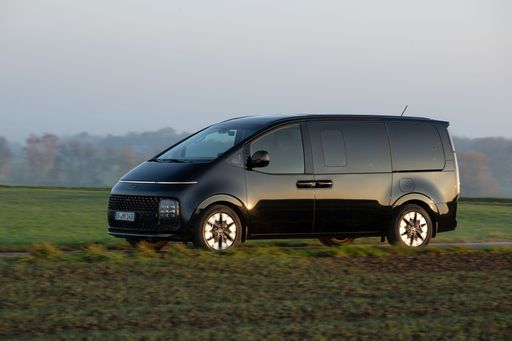 @ hyundai.news
@ hyundai.news
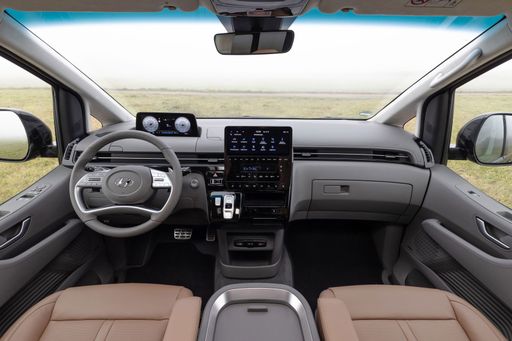 @ hyundai.news
@ hyundai.news
 @ hyundai.news
@ hyundai.news
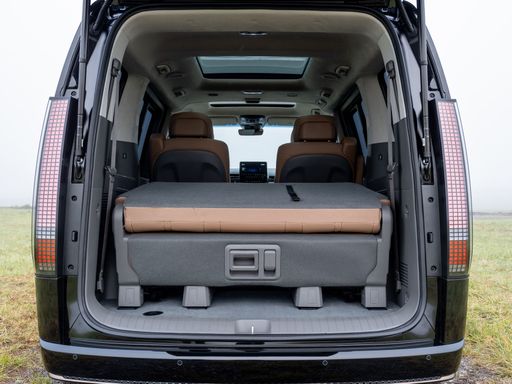 @ hyundai.news
@ hyundai.news
Nissan X-Trail
The Nissan X-Trail stands out with its spacious interior and practical design, making it an ideal choice for families and adventure enthusiasts alike. Its sleek exterior styling is complemented by modern technology features that enhance both driving pleasure and safety. This versatile SUV offers a comfortable ride, whether navigating city streets or exploring off-road paths, ensuring you travel in style and comfort.
details @ germany.nissannews.com
@ germany.nissannews.com
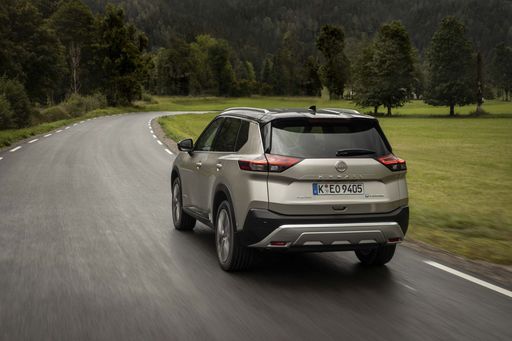 @ germany.nissannews.com
@ germany.nissannews.com
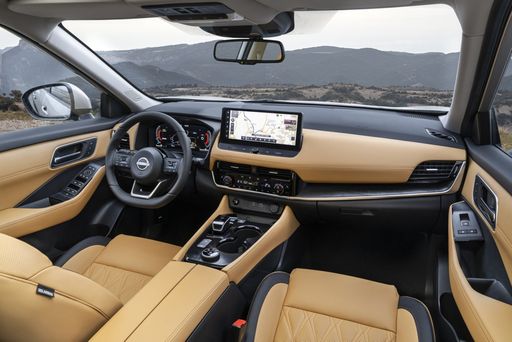 @ germany.nissannews.com
@ germany.nissannews.com
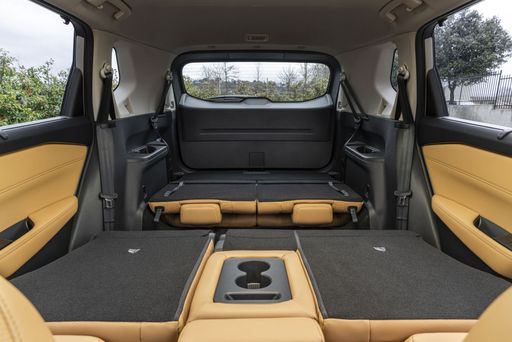 @ germany.nissannews.com
@ germany.nissannews.com
 @ hyundai.news
@ hyundai.news
|
 @ germany.nissannews.com
@ germany.nissannews.com
|
|
|
|
Costs and Consumption |
|
|---|---|
|
Price
42400 - 50500 £
|
Price
34000 - 50400 £
|
|
Consumption L/100km
7.60 L
|
Consumption L/100km
5.7 - 6.9 L
|
|
Consumption kWh/100km
-
|
Consumption kWh/100km
-
|
|
Electric Range
-
|
Electric Range
-
|
|
Battery Capacity
-
|
Battery Capacity
-
|
|
co2
172 g/km
|
co2
131 - 161 g/km
|
|
Fuel tank capacity
65 L
|
Fuel tank capacity
55 L
|
Dimensions and Body |
|
|---|---|
|
Body Type
Bus
|
Body Type
SUV
|
|
Seats
7 - 9
|
Seats
5 - 7
|
|
Doors
5
|
Doors
5
|
|
Curb weight
2275 - 2345 kg
|
Curb weight
1668 - 1961 kg
|
|
Trunk capacity
117 - 831 L
|
Trunk capacity
177 - 585 L
|
|
Length
5253 mm
|
Length
4680 mm
|
|
Width
1997 mm
|
Width
1840 mm
|
|
Height
1990 mm
|
Height
1720 mm
|
|
Max trunk capacity
431 - 1303 L
|
Max trunk capacity
1396 - 1424 L
|
|
Payload
605 - 775 kg
|
Payload
432 - 574 kg
|
Engine and Performance |
|
|---|---|
|
Engine Type
Full Hybrid
|
Engine Type
Petrol MHEV, Full Hybrid
|
|
Transmission
Automatic
|
Transmission
Automatic
|
|
Transmission Detail
Automatic Gearbox
|
Transmission Detail
CVT, Reduction Gearbox
|
|
Drive Type
Front-Wheel Drive
|
Drive Type
Front-Wheel Drive, All-Wheel Drive
|
|
Power HP
225 HP
|
Power HP
163 - 213 HP
|
|
Acceleration 0-100km/h
10.20 s
|
Acceleration 0-100km/h
7 - 9.6 s
|
|
Max Speed
167 km/h
|
Max Speed
170 - 200 km/h
|
|
Torque
367 Nm
|
Torque
300 - 525 Nm
|
|
Number of Cylinders
4
|
Number of Cylinders
3
|
|
Power kW
165 kW
|
Power kW
120 - 157 kW
|
|
Engine capacity
1598 cm3
|
Engine capacity
1497 cm3
|
General |
|
|---|---|
|
Model Year
2024
|
Model Year
2024
|
|
CO2 Efficiency Class
F
|
CO2 Efficiency Class
F, D, E
|
|
Brand
Hyundai
|
Brand
Nissan
|
What drive types are available for the Hyundai Staria?
The Hyundai Staria is available as Front-Wheel Drive.
The prices and data displayed are estimates based on German list prices and may vary by country. This information is not legally binding.
